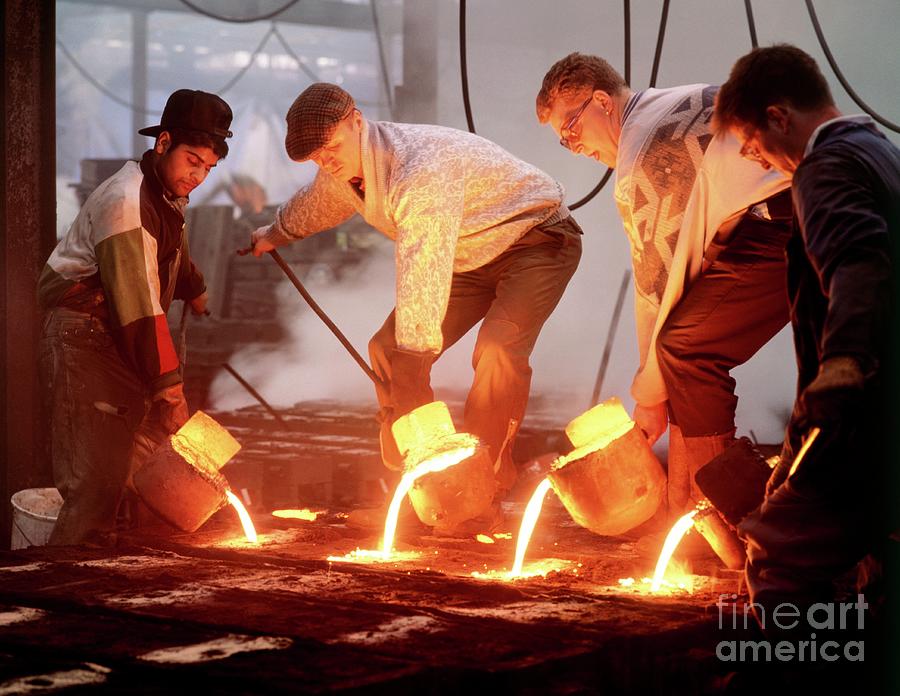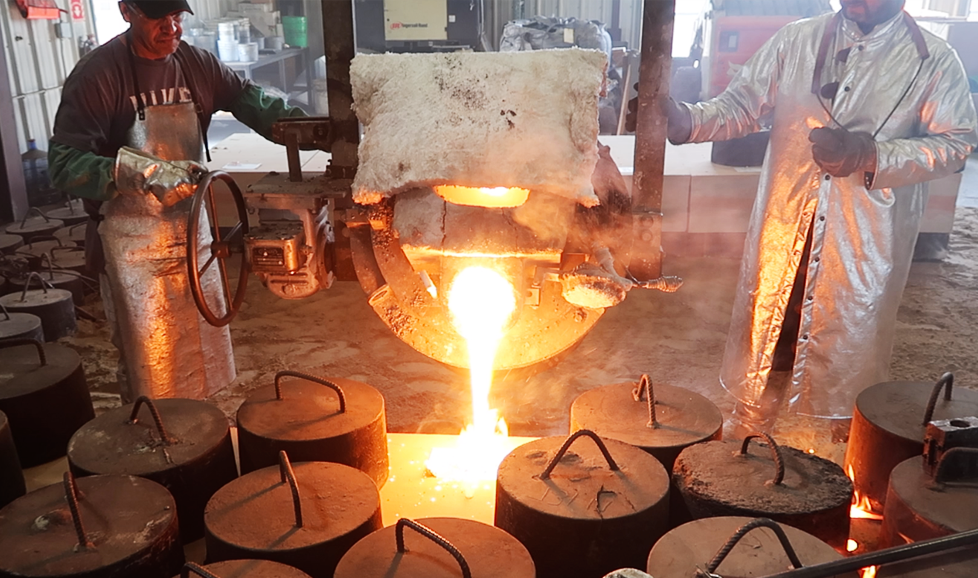Exploring the Art of Metal Casting: Techniques and Applications in Modern Foundries
Metal casting is a time-honored craft that incorporates artistry with design accuracy. From ancient techniques to contemporary improvements, this process has actually progressed considerably. Different techniques, such as sand casting and lost-wax casting, display the versatility of the tool. At the same time, technologies like 3D printing are reshaping exactly how shops run. As the lines in between capability and artistry blur, one must take into consideration how these advancements influence both traditional practices and modern applications. What exists ahead in this developing landscape?
The Fundamentals of Metal Casting
Metal casting, an essential procedure in manufacturing, includes putting liquified steel into a mold and mildew to achieve a preferred form. This strategy functions as a foundation in the production of complex steel components across numerous markets. Secret components of steel casting consist of the option of materials, which can range from aluminum to steel, each picked for its details properties and application viability. The procedure begins with mold and mildew creation, which can be made from sand, metal, or ceramics, relying on the casting technique used. The molten metal is then very carefully poured into the mold, where it solidifies and cools. Vital variables such as temperature level control, cooling price, and mold and mildew layout considerably affect the last item's quality and features. In enhancement, comprehending the chemical and physical properties of the metal help in maximizing casting efficiency, eventually improving the efficiency of the manufacturing procedure and ensuring high-quality output tailored to details needs.
Typical Casting Strategies
Conventional casting methods encompass a range of techniques that have stood the examination of time, showing their performance in producing detailed steel parts. One noticeable approach is sand casting, which uses a combination of sand and a bonding representative to develop molds. The convenience of sand casting enables the production of varied shapes, making it suitable for both small-scale and massive manufacturing. An additional notable strategy is financial investment casting, frequently made use of for accurate and complex geometries. This technique includes developing a wax pattern that is coated in a ceramic covering, which is then heated to eliminate the wax, leaving a cavity for liquified steel. Furthermore, pass away casting is utilized for high-volume manufacturing, where molten metal is injected into recyclable steel mold and mildews. Each of these typical techniques stays relevant, showcasing the workmanship and ability intrinsic in the art of steel casting, while satisfying the needs of different sectors.
Modern Innovations in Metal Casting
As industries evolve, developments in steel casting are improving production processes and enhancing performance. Advanced technologies such as 3D printing and computer-aided layout (CAD) are changing mold and mildew creation, permitting detailed styles that were formerly unattainable. These approaches help with fast prototyping, fostering and minimizing lead times imagination in product advancement.
Furthermore, the combination of automation and robotics in shops is streamlining procedures, lessening human error, and raising safety. Smart sensing units and real-time surveillance systems make it possible for exact control of temperature and product properties, guaranteeing greater top quality outcomes.
Additionally, sustainable practices are arising, with making use of energy-efficient furnaces and recycled materials, decreasing environmental influence. The adoption of composite materials and innovative alloys is additionally expanding the opportunities of metal casting, causing more powerful and lighter elements. On the whole, these modern advancements are changing metal more info casting into a much more effective, specific, and environmentally accountable market.
Applications Across Numerous Industries

While diverse industries progressively count on steel casting, the strategy's versatility plays a vital role in meeting specific application needs. In the auto sector, steel casting is essential for producing engine parts, transmission real estates, and various other complex parts that require accuracy and longevity. The aerospace sector gain from lightweight casted parts, making certain both efficiency and fuel performance. Furthermore, the building and construction sector uses steel casting for architectural elements, such as beams and supports, boosting the honesty of buildings and bridges.
The power industry employs metal casting for wind turbine blades and various other significant equipment that need to stand up to severe problems. Clinical tools likewise see applications of steel casting, particularly in medical instruments and prosthetics, where accuracy is important - Metal Casting. Generally, the convenience and reliability of metal casting make it indispensable across various fields, adding to the advancement of innovation and infrastructure in modern-day society
The Artistic Side of Metal Casting
Commonly linked with commercial applications, metal casting also discovers its location in the domain name of art, where proficient craftsmens change liquified steel right into complex styles and expressive sculptures. This creative side of steel casting incorporates varied techniques, including sand casting, lost-wax casting, and financial investment casting, each offering unique possibilities for creativity. Artists use these methods to create works that range from abstract types to natural representations, permitting individual expression and commentary on modern issues.

Regularly Asked Inquiries
What Safety And Security Procedures Are Important in a Metal Casting Factory?
Crucial security actions in a metal casting factory consist of personal protective equipment, correct air flow, emergency methods, training in managing molten steels, routine tools upkeep, and clear communication of dangers to ensure employee security and health. Aluminum Casting.
How Do Environmental Rules Influence Metal Casting Processes?
Environmental laws considerably influence steel casting processes by mandating using cleaner technologies, lowering emissions, and advertising waste management methods. Conformity typically requires financial investments in equipment, training, and adjustments to existing procedures to minimize environmental impact.
What Are the Usual Defects in Metal Castings?
Typical defects in metal castings include porosity, shrinkage, incorporations, and misruns. These problems can emerge from improper mold design, inadequate temperature level control, or contamination, inevitably impacting the structural integrity and general top quality of the end product.
How Is Waste Managed During Metal Casting Production?
Waste management in steel casting production involves reusing scrap steel, implementing efficient material use, and utilizing innovative innovations to minimize waste. Factories take on practices like sand reclamation and correct disposal approaches to minimize environmental influence.
What Occupation Opportunities Exist in the Metal Casting Sector?
The steel casting sector provides diverse occupation possibilities, including duties such as factory manager, metallurgical engineer, high quality control inspector, pattern manufacturer, and production manager, catering to various capability and know-how in manufacturing processes.
Metal casting, a pivotal procedure in manufacturing, includes putting liquified steel right into a mold and mildew to accomplish a wanted shape. Furthermore, pass away casting is used for high-volume manufacturing, where liquified metal is infused into multiple-use metal molds. While varied industries increasingly depend on steel casting, the technique's versatility plays a crucial function in conference particular application requirements. Frequently linked with industrial applications, metal casting likewise discovers its place in the domain name of art, where knowledgeable craftsmens change liquified steel right into intricate styles and expressive sculptures. Waste monitoring in steel casting production includes reusing scrap metal, executing efficient product usage, and making use of sophisticated technologies to lessen waste.